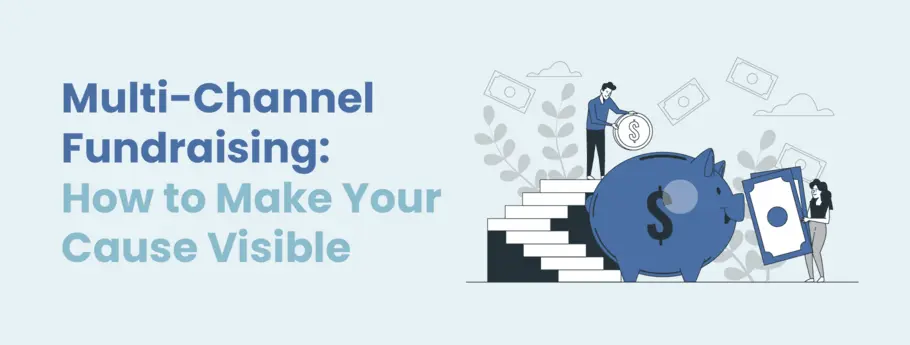The Role of Neighborhood Interaction in Nonprofit Fundraising: Building Lasting Relationships for Lasting Support
Neighborhood interaction is increasingly identified as an important part of effective nonprofit fundraising. The strategies and techniques employed to involve areas differ widely, increasing essential questions concerning effectiveness and impact.
Comprehending Area Involvement
Community engagement is an important element of successful nonprofit fundraising efforts. It refers to the methods and tasks that companies use to attach with their neighborhood areas, cultivating partnerships that are equally advantageous. Comprehending neighborhood interaction involves recognizing its multifaceted nature, which includes outreach, participation, and collaboration. Nonprofits need to recognize crucial stakeholders-- such as community participants, local services, and other organizations-- to develop effective interaction techniques.
Effective community engagement is predicated on energetic listening and responsiveness to the needs and interests of the area. This process involves soliciting comments, comprehending community dynamics, and guaranteeing that the company's objective straightens with regional concerns. Involving the area can take different forms, including public meetings, volunteer chances, and collaboration initiatives, each created to motivate participation and investment in the company's goals.
Moreover, area engagement ought to be approached as a recurring discussion instead of a single effort. By cultivating a comprehensive environment where community voices are listened to and valued, nonprofits can develop a strong foundation for future fundraising endeavors. Inevitably, a deep understanding of neighborhood engagement encourages organizations to produce genuine links that boost their general performance and sustainability.
Benefits of Strong Relationships
Strong connections created via community interaction return countless advantages for nonprofit fundraising efforts. Primarily, these connections foster depend on and integrity, vital parts in motivating contributors to contribute. When prospective advocates see a not-for-profit proactively entailed in their community, they are extra most likely to believe in its mission and effect.

Furthermore, these relationships assist in effective interaction. Nonprofits can leverage their links to share stories of effect, updates, and requires, making sure that supporters continue to be informed and involved. This open line of interaction not only reinforces bonds however also motivates referral promotion, increasing the nonprofit's reach.
Last but not least, strong community connections can draw in new companions and sponsors. Companies and individuals are much more likely to line up with organizations that show purposeful area participation, supplying extra resources and assistance that can significantly boost fundraising capacities. Therefore, growing durable partnerships via area involvement is important to a not-for-profit's long-term fundraising success.
Strategies for Reliable Interaction
Just how can nonprofits effectively engage their neighborhoods to boost fundraising efforts? Establishing targeted techniques is vital for promoting meaningful links. Initially, leveraging social media systems makes it possible for organizations to share their mission dynamically and interactively, reaching a broader target market. Routine updates, involving material, and calls-to-action can galvanize community interest and involvement.
2nd, holding community occasions, such as workshops, volunteer possibilities, or fundraising drives, assists in face-to-face interaction, permitting nonprofits to display their effect and efforts. These occasions not only raise funds yet likewise cultivate partnerships and enable community participants to engage straight with the cause.
Third, implementing customized communication approaches can boost interaction. Tailoring messages to specific benefactor sections based on passions and previous contributions fosters a feeling of belonging and financial investment in the company's check objective.
Finally, developing collaborations with regional companies and neighborhood leaders can magnify outreach initiatives. Collective campaigns can improve presence and integrity, showing a cumulative commitment to the neighborhood's health. By integrating these methods, nonprofits can build long-term connections that boost fundraising efforts and drive lasting assistance.
Measuring Interaction Success
While involving the community is crucial for successful not-for-profit fundraising, determining the performance of these interaction efforts is similarly vital. Developing clear metrics allows organizations to analyze exactly how well they are attaching with their audience and accomplishing their fundraising goals. Secret efficiency indicators (KPIs) such as benefactor retention rates, volunteer engagement levels, and involvement on social networks platforms supply tangible data for assessment.

On a regular basis analyzing these metrics makes it possible for organizations to pivot their strategies when needed, making sure that neighborhood interaction stays aligned find out here now with their general mission. In addition, sharing these results with stakeholders fosters transparency and constructs depend on, urging additional area involvement. Inevitably, a robust dimension structure not only educates future fundraising initiatives yet likewise strengthens the partnership between the not-for-profit and its advocates, laying the groundwork for lasting success.
Study in Community Influence
Various instance studies highlight the extensive effect that area engagement can carry not-for-profit fundraising success. One significant instance is the "Something to chew on" effort, where a neighborhood food bank partnered with institutions and businesses to host community dinners. These occasions not only elevated funds however also cultivated a feeling of belonging among individuals, dramatically enhancing benefactor retention rates.
One more engaging case is the "Environment-friendly Spaces Job," which involved regional homeowners in the revitalization of metropolitan parks. This campaign not only amassed monetary support from neighborhood services but additionally grew a volunteer base that added to recurring upkeep and shows. The sense of possession and satisfaction amongst neighborhood participants converted right into continual payments.
In the realm of arts, the "Art for All" campaign effectively engaged local artists and patrons to create collaborative art setups, bring about increased visibility and donations for a regional arts Homepage not-for-profit.
These instances highlight that when nonprofits focus on neighborhood participation, they can develop long lasting connections that boost fundraising initiatives, making certain sustainable assistance and promoting a vivid community culture. Such cases demonstrate that area involvement is not just a strategy however an important pillar of nonprofit success.
Final Thought
To conclude, area involvement is integral to the success of nonprofit fundraising initiatives. By cultivating solid partnerships with neighborhood stakeholders, companies improve count on and integrity, causing enhanced donor retention and loyalty. Applying efficient interaction techniques and determining their impact makes certain that nonprofits can prosper and adapt. Ultimately, a robust structure of area support not just amplifies fundraising possible but also grows a culture of cooperation, vital for achieving long-term business objectives and maintaining meaningful impact.
Nonprofits must identify essential stakeholders-- such as area participants, local companies, and various other companies-- to create efficient involvement strategies.

In conclusion, community involvement is indispensable to the success of not-for-profit fundraising initiatives.
Comments on “Nonprofit Marketing: Techniques to Enhance Understanding and Drive Donations”